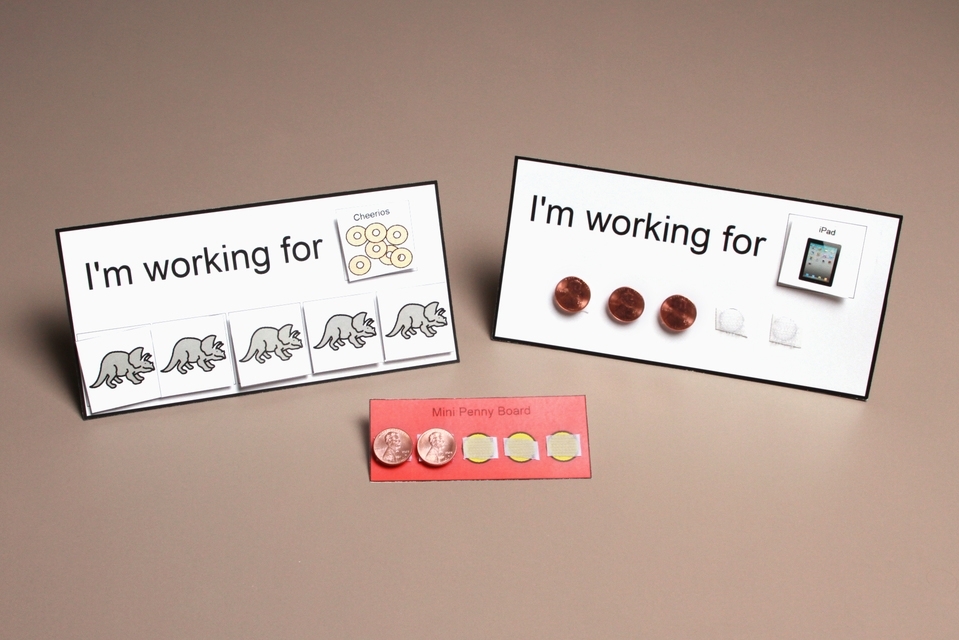
VISUAL REMINDER OF REINFORCER
VISUAL REMINDER OF REINFORCER
Use a visual to remind students what they are working for.

Adapt for learners
Adapt for learners
Preload boards for emergent learners.
reinforce multiple behaviors
reinforce multiple behaviors
Watch as a student is reinforced for multiple behaviors.
When to use:
- Use when a student is ready to progress beyond 1-to-1 reinforcement.
- Use to build behavioral momentum.
How to use:
- Select a preferred reinforcer or allow the student to choose one from a choice board. It is important that the reinforcer is motivating enough to keep the student engaged without immediate reinforcement.
- Each time the student completes a target task or behavior, name the behavior (e.g. - “Sitting at table.”), hand student a token, and ask them to place it on the token board.
- When the token board is full, give the student the identified reinforcer and reset the board for use again.
- Adjust and fade as needed.
Teaching Token Boards:
- Begin with a token board that is almost complete. If using a 5 penny board, for example, pre-load the board with 4 pennies. When the student performs the desired behavior, place another penny on the board and immediately reinforce the student. Always place the penny on the board in view of the student and pair with verbal reinforcement each time.
- As the student becomes more familiar with the token board, preload the board with fewer pennies until you reach the student’s current ability level. The ultimate goal is to start with an empty board.
- When introducing the token board, the teacher may manipulate the board and tokens. As student understanding of the token board increases, allow the student to manipulate the board and tokens.
Tips:
- A token board will not work without a genuinely motivating reinforcer. One way to find out what a student likes is to perform a preference assessment.
- The number of tasks must be appropriate for the learner. If they think the tasks are too hard or too long, the motivation for the student is low. Make goals attainable to ensure the student earns reinforcement often.
- Once a token is earned, DO NOT take it away. Instead of removing a token for inappropriate behavior, prompt an alternative appropriate behavior that will earn a token.
- Token boards rate of reinforcement can vary depending on task and/or student behavior. For example, increase the rate of reinforcement during difficult times to build behavioral momentum.
Variations:
- For older students and/or readers, you can use letters, in lieu of tokens, to spell out the desired reinforcer
